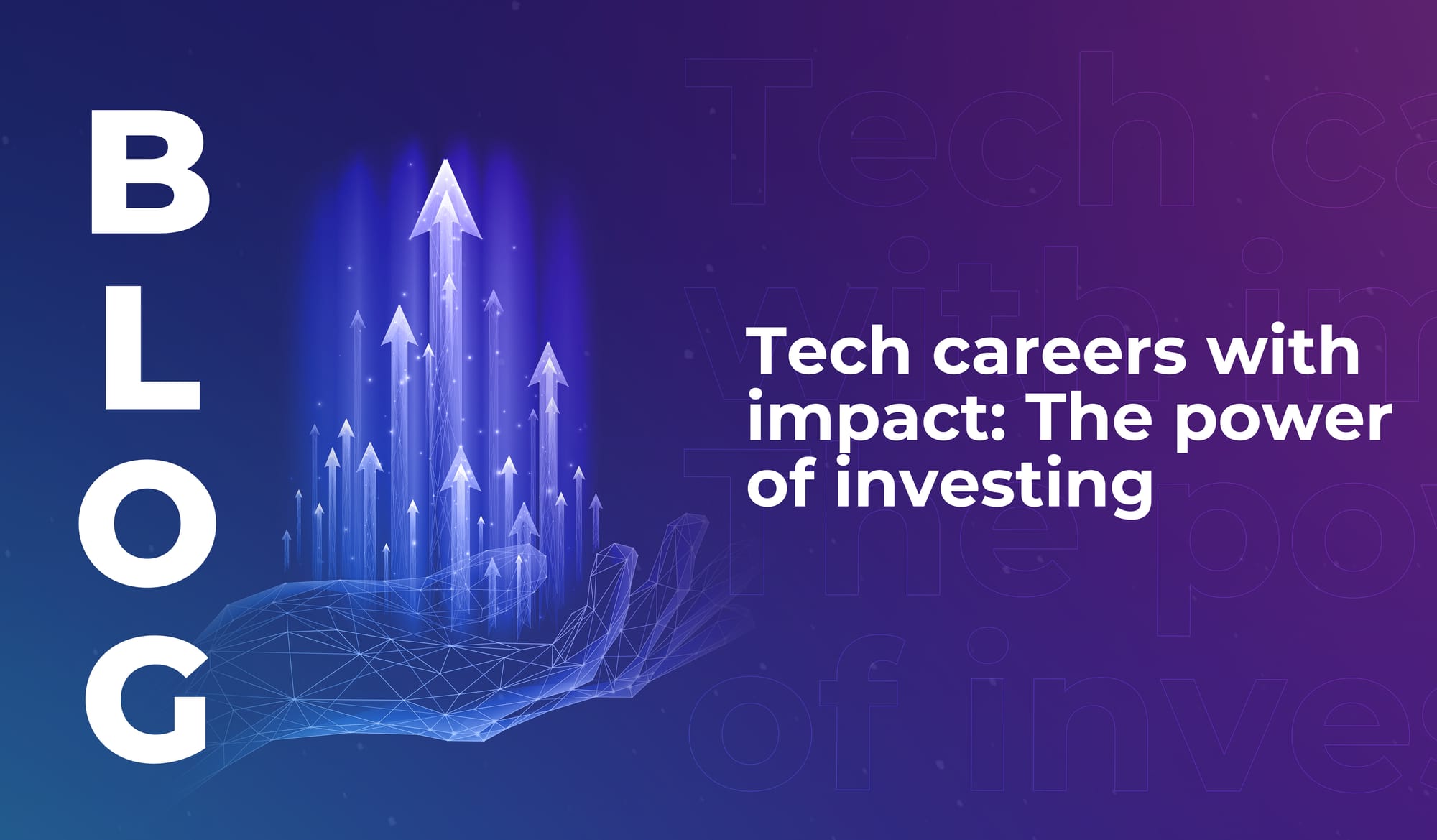
Tech careers with impact: The power of investing
If you’ve ever thought about becoming a tech investor, read this – learn why investors are the quiet force shaping the future of the industry.


Kevin Ashton coined the phrase ‘the Internet of Things’ in 1999, with great optimism that the rise of connected devices and sensors could change the world for the better. In a 2015 interview for the Smithsonian, he said:
“It’s only been a few years, but we already take networked sensors for granted.”
And several years later still, that’s absolutely true: we live in an increasingly connected world, and we do take it for granted.
We check the weather apps on our smartphones to help us decide what to wear each day – without giving any thought to the complex data collection and analysis that enables those apps to function. We track the progress of buses or food delivery drivers as they travel towards us, to ensure we’re standing in the exact right spot in the street at the exact right time to catch that bus or take that delivery. The food we eat has been grown and transported with the support of environmental sensors that monitor its growing conditions and transportation atmosphere.
And that’s just a few of the many ways that IoTs are involved in streamlining day-to-day life around the world.
But the fact that IoTs are taken for granted isn’t a bad thing. It’s a sign that they’re working: they’re making life easier without imposing their presence in an uncomfortable way. The Internet of Things creates opportunities for direct integration of our physical world into computer systems and digital networks – enabling more efficiency, economic advantages, and more ease of life.
So how can we expect the IoT sector to develop in the months and years to come?
According to IoT Analytics, the number of IoT devices globally grew by 18% in 2022 to 14.3 billion active endpoints. In 2023, that number is expected to grow by another 16%, reaching 16.7 billion connected IoT devices. And by 2025, this could increase to as many as 27 billion active endpoints.
This is in part driven by the rollout of 4G and 5G networks. As 2G and 3G wireless networks are replaced with more efficient versions, the capacity for connectivity around the world (particularly in urban areas, but also in some harder-to-reach regions) will improve – enabling better communication between a larger number of connected devices.
The industrial use cases for IoT devices and networks will continue to evolve. Key areas for industrial IoT development include:
One thing the Internet of Things is not?
It’s not simple.
IoT networks are inherently complicated, demanding the collection and analysis of various data sets from different sources – and the integration of all that data into actionable insights and instructions.
So as our understanding of the capabilities of IoT continues to grow, technologists will develop new and better platforms to help businesses leverage the benefits of IoT devices.
IoT Analytics predicted that spending on IoT software would reach USD $53 billion by 2022. And investments in the IoT ecosystem are forecast to surpass $1 trillion in 2026, growing at a CAGR of 10.4% until then.
Devices and sensors characterise the Internet of Things. But we can expect to see more focus on the software and connectivity that makes those devices genuinely useful – because without efficient networks and platforms, IoT endpoints are useless.
It’s not as prevalent in day-to-day conversation as the Internet of Things – but edge computing is a network technology that brings computation and data storage closer to the actual sources of data. It can improve response times and save bandwidth, and enable endpoints in remote locations to process data and generate insights and actions in real-time.
Because edge computing functions at the ‘edge’ of a network (for example, working as a standalone device or interacting with a nearby server) and only sends the most relevant data back to the main data centre, it can minimise network latency and make IoT networks more efficient.
You can think of it sort of like a reflex arc in the human body. Reflex arcs are neural pathways that control reflexive movements – and those movements are actioned without the sensory neurons having to pass into the brain. That makes our reflexes really fast: we move as a result of activating spinal motor neurons, without the delay of sending signals into and back out of the brain.
Similarly, edge computing allows certain processes to take place in peripheral areas of a network without needing to send all data to and from the centre of the network.
It can significantly improve the performance of applications and entire IoT networks – and it’s an emerging computing paradigm that’s expected to become increasingly important in IoT implementation over the coming years.

If you’ve ever thought about becoming a tech investor, read this – learn why investors are the quiet force shaping the future of the industry.

Tech generalists will enable emerging technologies to integrate across industries and societies in meaningful ways. We still need specialists – but we also need big-picture people.

Discover three tech sectors facing a talent shortage this year. Could you find your ideal role in a high-demand sector like cybersecurity, cloud computing, or artificial intelligence?

If you’ve ever thought about becoming a tech investor, read this – learn why investors are the quiet force shaping the future of the industry.

Tech generalists will enable emerging technologies to integrate across industries and societies in meaningful ways. We still need specialists – but we also need big-picture people.

Discover three tech sectors facing a talent shortage this year. Could you find your ideal role in a high-demand sector like cybersecurity, cloud computing, or artificial intelligence?